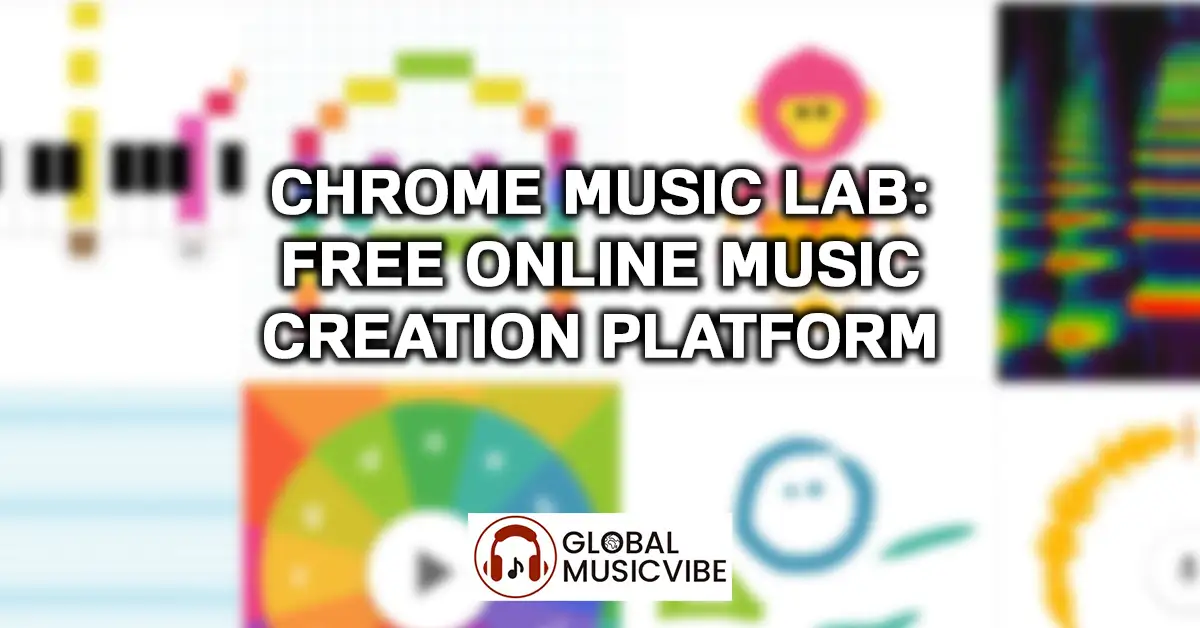Chrome Music Lab is a free, web-based platform that makes learning music more accessible through fun, hands-on experiments. This interactive website is filled with playful experiments that let you create, explore, and share music right from your web browser—no downloads, sign-ups, or musical experience needed. Developed by Google’s Creative Lab, Chrome Music Lab has become an essential tool for teachers, students, creators, and music enthusiasts worldwide.
What Is Chrome Music Lab?
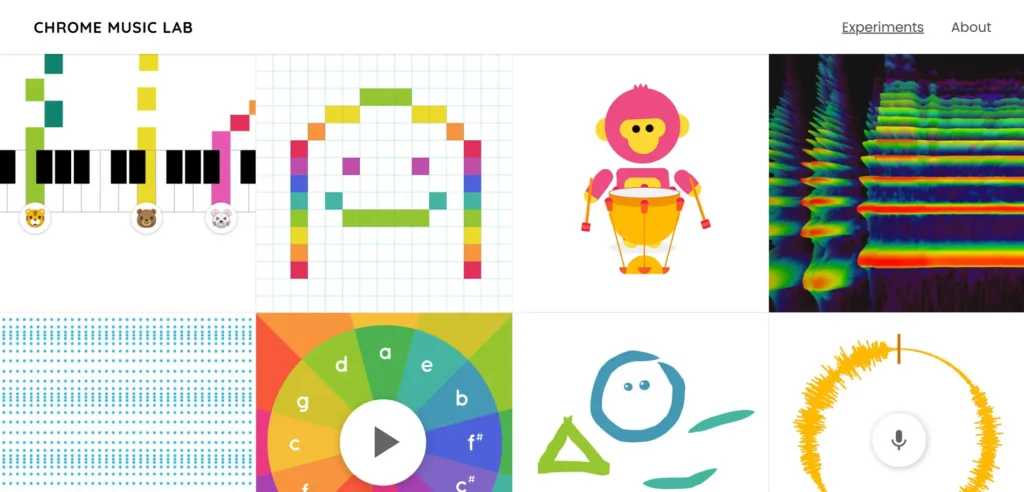
Chrome Music Lab is designed to let anyone, of any age, explore how music works through simple experiments. All experiments are built with freely accessible web technology such as Web Audio API, WebMIDI, Tone.js, and more. Since 2009, coders have created thousands of amazing experiments using Chrome, Android, AI, WebVR, AR and more, with Chrome Music Lab being one of the standout educational platforms.
The platform emerged from Google’s commitment to making music education accessible to everyone. Created for Music In Our Schools Month, the platform encourages children towards music learning through the unique use of technology. Chrome Music Lab leverages the Web Audio API, a high-level JavaScript API for processing and synthesizing audio in web applications, allowing for precise control over audio signals, including creating oscillators, applying filters, and manipulating audio gain.
Key Features and Experiments
Chrome Music Lab offers a diverse collection of interactive tools, each designed to explore different aspects of music creation and theory. Here are the main experiments available:
Song Maker
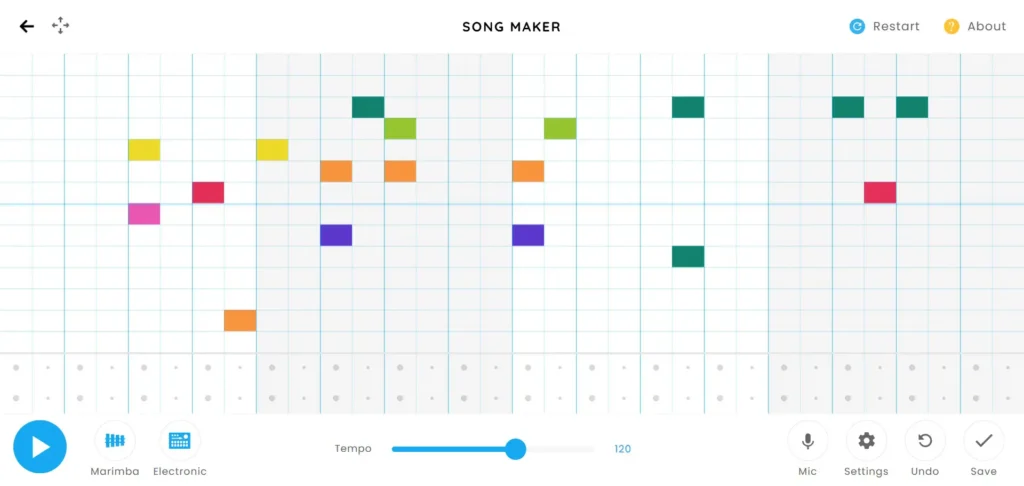
Song Maker is the cornerstone of Chrome Music Lab, featuring a grid-based sequencer that allows users to create melodies and rhythms. Using a grid, you click in the boxes to add sounds to the song, and it’s also possible to add notes by using the arrow keys on the computer keyboard. The tool supports both melodic and percussion components, making it versatile for various musical creations.
Rhythm
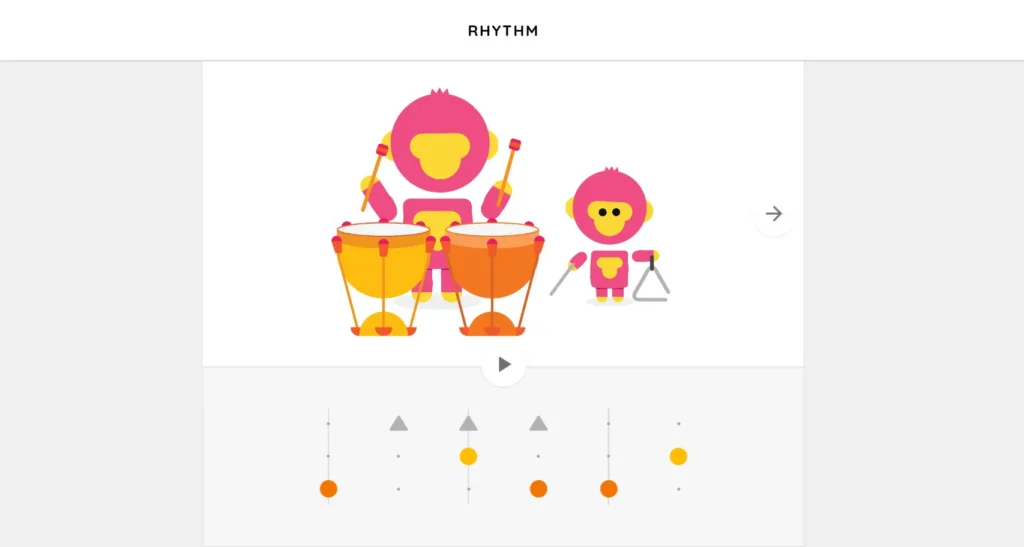
The Rhythm tool is a great introduction to Chrome Music Lab, allowing you to create rhythm patterns by clicking on a grid to add beats for various percussion instruments. There are four grid templates, each with a different number of beats – three, four, five, or six beats per grid.
Shared Piano
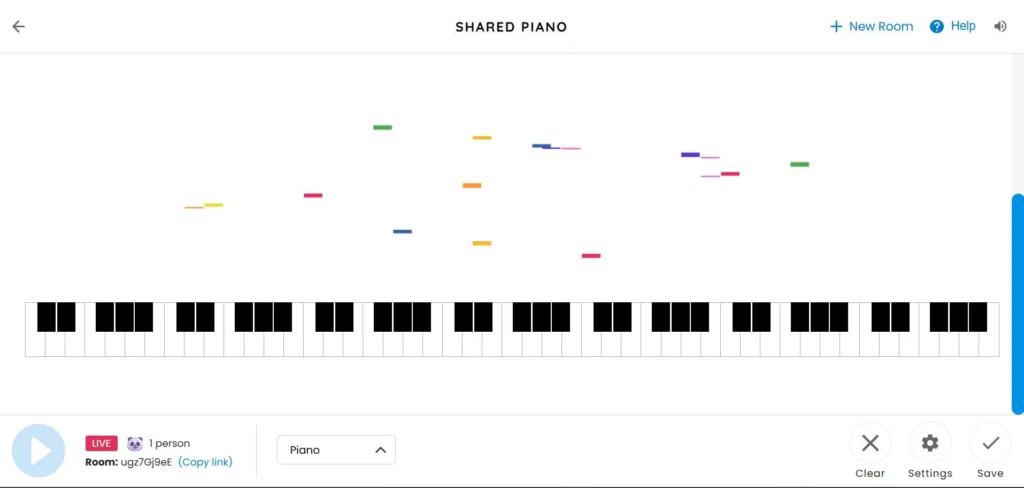
The Shared Piano allows users to play the piano and make music together, with the ability to share a link to a live room with up to 10 people and begin playing music. This collaborative feature makes it perfect for distance learning and group music sessions.
Kandinsky
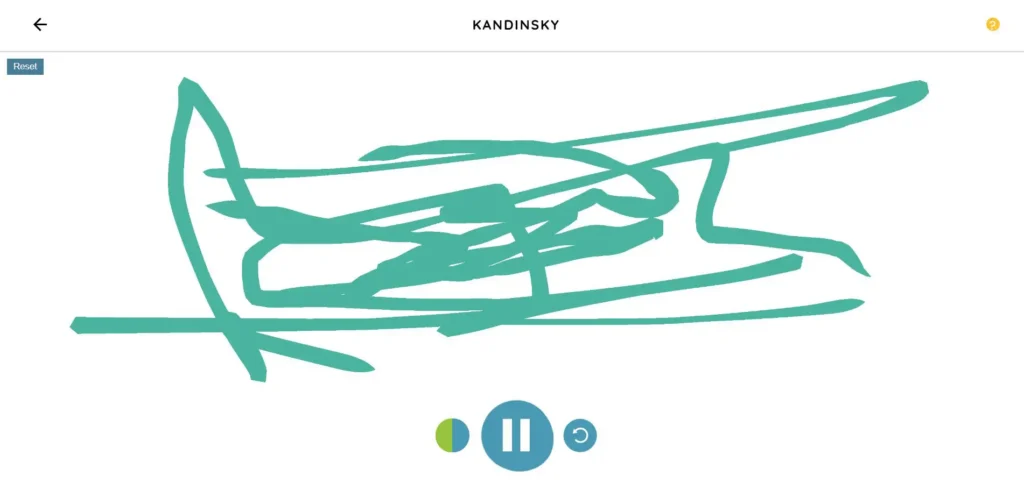
Kandinsky turns your artwork into music – draw shapes, then listen as lines and circles “sing,” making it perfect for connecting art to sound in STEAM classes. This unique experiment bridges visual art and musical expression.
Voice Spinner
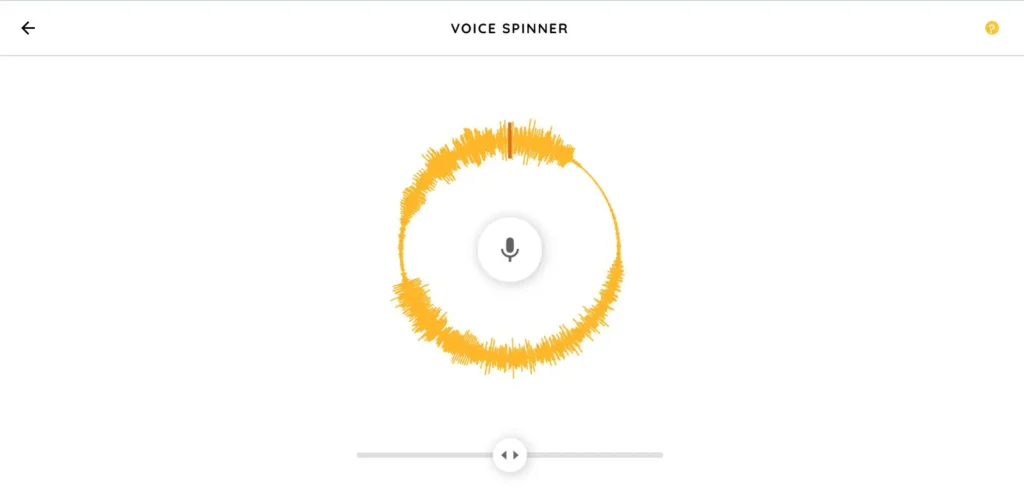
Voice Spinner allows you to record and warp your voice, speeding up or reversing playback for instant audio experimentation. The Voice Spinner works similarly to a record player, in that you can hear how spinning it fast, slow, forwards, or backwards affects the sound.
Spectrogram
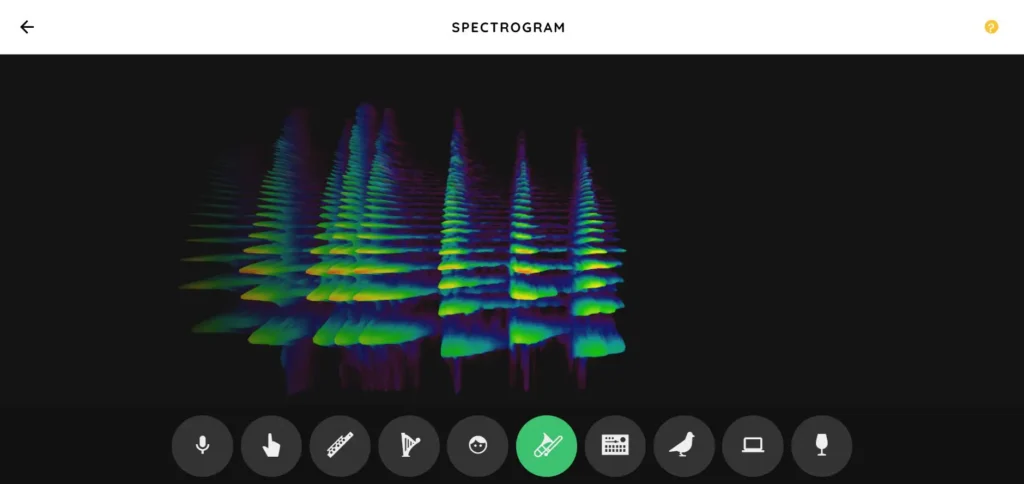
The Spectrogram tool shows the low and high frequencies that make up sound and also shows how they change, allowing you to view pre-recorded sounds from various instruments or use the microphone to record your own.
Additional Experiments
Other notable experiments include:
- Sound Waves: See how air molecules move back and forth as sound travels through them
- Arpeggios: Play arpeggios in various patterns in both major and minor keys
- Strings: Demonstrates the mathematical relationship between string length and pitch
Educational Benefits and Applications
Chrome Music Lab has revolutionized music education by removing traditional barriers to musical learning. Many teachers have been using Chrome Music Lab as a tool in their classrooms to explore music and its connections to science, math, art, and more, combining it with dance and live instruments.
For Educators
Game-Changer Activities for Music Teachers and Parents include using Melody Maker to invent call-and-response games or rhythmic challenges, scaffolding lessons by letting students first explore freely, then layer in composition tasks. The platform particularly excels in supporting neurodiverse learners by providing multisensory tools to process sound, structure, and collaboration.
Cross-Curricular Integration
Chrome Music Lab experiments help you go from pure exploration to real composition, with no dry theory required. Teachers can start with playful activities and gradually introduce more complex musical concepts. The platform seamlessly integrates with STEAM education, connecting music theory to mathematical concepts, scientific principles, and artistic expression.
Accessibility Features
All tools are visual, touch-friendly, and built for rapid exploration with no login or setup required, so students and teachers can focus on music, not troubleshooting. The average duration for users to start creating their first piece of music is under 10 minutes, showcasing its ease of use.
Technical Innovation and Open Source Nature
Chrome Music Lab is open source, with experiments using a variety of tools including Web Audio API, WebRTC, WebMIDI, Tone.js, and more. Google provides open-source code so that others can build new experiments based on what they’ve started. This commitment to open source development has fostered a community of developers who continue to expand the platform’s capabilities.
Advanced Technical Features
For users with technical backgrounds, Chrome Music Lab’s functionality can be extended by directly interacting with the underlying JavaScript code, which requires a more advanced understanding of web development and the Web Audio API. Advanced users can inspect source code using browser developer tools and even create custom instruments by leveraging the Web Audio API.
Device Compatibility and Accessibility
You can play with these experiments across devices – phones, tablets, laptops – just by opening the site on a web browser such as Chrome. This cross-platform compatibility ensures that users can access Chrome Music Lab regardless of their device or operating system.
For those interested in creating music on different platforms, having quality headphones or earbuds can significantly enhance the audio experience when working with Chrome Music Lab experiments. The platform’s web-based nature means it works seamlessly across devices, making it accessible to users regardless of their hardware setup.
Impact on Music Creation and Learning
Chrome Music Lab has democratized music creation by making it accessible to anyone with an internet connection. Users of Chrome Music Lab have praised its simplicity and educational value, with educators finding it particularly useful as it engages students in a fun and interactive way, making complex musical concepts easy to understand.
The platform has inspired countless musical creations and has become a gateway for many people to discover their passion for music. Whether users are creating their first melody or exploring advanced sound manipulation techniques, Chrome Music Lab provides a judgment-free environment for musical experimentation.
For musicians looking to expand their repertoire or find inspiration, exploring different songs can provide creative ideas that can then be recreated or reimagined using Chrome Music Lab’s tools.
Getting Started with Chrome Music Lab
If you’ve never used Chrome Music Lab, you can start in seconds with just internet access and a web browser, requiring no experience, payment, or special knowledge. The process is straightforward:
- Open Chrome Music Lab in any web browser
- Browse the grid of experiment options and explore the various tools available
- Pick one that matches your goal – whether you want to create a melody, experiment with rhythm, or explore sound visualization
- Click and interact – you can add notes, change instruments, draw, or record with zero risk of “doing it wrong”
Tips for New Users
- Start with Song Maker for a comprehensive introduction to music creation
- Experiment with Rhythm to understand basic beat patterns
- Try Kandinsky to see the connection between visual art and music
- Use Voice Spinner for fun audio manipulation experiments
- Explore Spectrogram to visualize how sound works
Limitations and Considerations
While Chrome Music Lab excels as an educational and introductory platform, some users have noted that while it is excellent for beginners, it may lack advanced features that professional musicians might look for. The platform also lacks collaboration features for real-time collaborative composition, though it does provide the ability to share links of compositions.
However, these limitations don’t diminish its value as an educational tool and creative starting point. Chrome Music Lab serves its intended purpose perfectly: making music accessible and fun for everyone, regardless of their experience level.
Future Developments and Community
Google always gets inspired by new, unexpected ways that people use these experiments, and the platform continues to evolve based on user feedback and creative applications. The open-source nature of the project ensures that the community can contribute to its development and create new experiments.
The platform has also inspired similar tools and has influenced how educational technology approaches creative subjects. Its success has demonstrated that complex concepts can be taught through interactive, web-based experiments that prioritize engagement and exploration over traditional instructional methods.
Frequently Asked Questions
What is Chrome Music Lab used for?
Chrome Music Lab is used for music education, creative experimentation, and learning about how music works. Teachers use it in classrooms to explore connections between music and other subjects like science, math, and art. Students and music enthusiasts use it to create songs, understand musical concepts, and experiment with sound.
Do I need to download anything to use Chrome Music Lab?
No downloads are required. Chrome Music Lab runs entirely in your web browser and works on phones, tablets, and computers. You simply visit the website and start experimenting immediately with no sign-up or installation needed.
Is Chrome Music Lab completely free?
Yes, Chrome Music Lab is completely free to use with no hidden costs, subscription fees, or premium features. Google provides it as an educational resource accessible to everyone with an internet connection.
Can I save and share my Chrome Music Lab creations?
Yes, particularly with the Song Maker tool, you can save your compositions and share them with others using generated links. This makes it easy to collaborate or showcase your musical creations with friends, family, or classmates.
What age group is Chrome Music Lab suitable for?
Chrome Music Lab is designed for all ages, from young children to adults. Its intuitive interface makes it accessible to beginners while still offering enough depth for more experienced users to explore advanced musical concepts.
Can Chrome Music Lab replace traditional music education?
While Chrome Music Lab is an excellent supplementary tool that makes music learning more accessible and engaging, it’s designed to complement rather than replace traditional music education. It serves as a powerful introduction to musical concepts and a platform for creative experimentation.
Chrome Music Lab represents a significant advancement in making music education accessible, interactive, and enjoyable for learners worldwide. By combining cutting-edge web technology with intuitive design, it has created a platform where anyone can explore the fundamentals of music creation and theory. Whether you’re an educator looking for innovative teaching tools, a student beginning your musical journey, or simply someone curious about how music works, Chrome Music Lab offers an engaging and valuable experience that continues to inspire creativity and learning across the globe.

